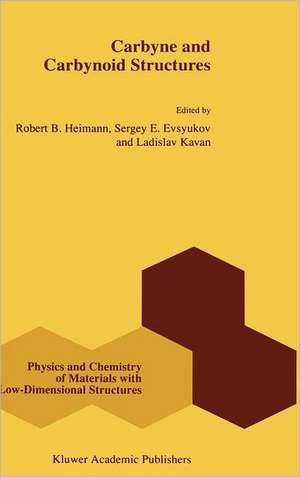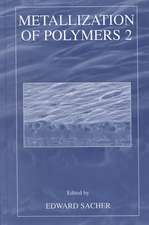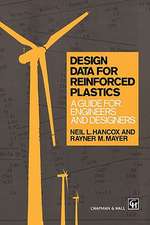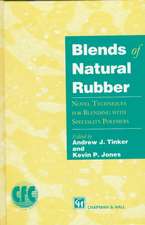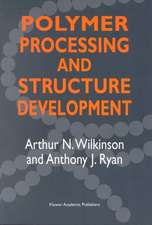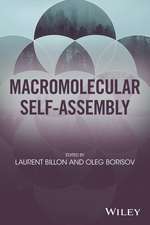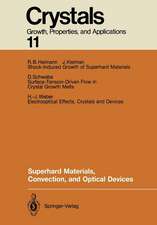Carbyne and Carbynoid Structures: Physics and Chemistry of Materials with Low-Dimensional Structures, cartea 21
Editat de R. B. Heimann, S. E. Evsyukov, Ladislav Kavanen Limba Engleză Hardback – 28 feb 1999
| Toate formatele și edițiile | Preț | Express |
|---|---|---|
| Paperback (1) | 1224.85 lei 6-8 săpt. | |
| SPRINGER NETHERLANDS – 26 oct 2012 | 1224.85 lei 6-8 săpt. | |
| Hardback (1) | 1231.01 lei 6-8 săpt. | |
| SPRINGER NETHERLANDS – 28 feb 1999 | 1231.01 lei 6-8 săpt. |
Din seria Physics and Chemistry of Materials with Low-Dimensional Structures
- 18%
 Preț: 1830.49 lei
Preț: 1830.49 lei -
 Preț: 398.15 lei
Preț: 398.15 lei - 18%
 Preț: 1232.26 lei
Preț: 1232.26 lei - 18%
 Preț: 1223.55 lei
Preț: 1223.55 lei - 18%
 Preț: 1225.16 lei
Preț: 1225.16 lei - 18%
 Preț: 1225.31 lei
Preț: 1225.31 lei - 18%
 Preț: 1833.33 lei
Preț: 1833.33 lei - 18%
 Preț: 1230.53 lei
Preț: 1230.53 lei - 18%
 Preț: 1228.47 lei
Preț: 1228.47 lei -
 Preț: 402.98 lei
Preț: 402.98 lei -
 Preț: 386.99 lei
Preț: 386.99 lei - 18%
 Preț: 952.57 lei
Preț: 952.57 lei - 18%
 Preț: 1227.99 lei
Preț: 1227.99 lei - 18%
 Preț: 962.18 lei
Preț: 962.18 lei - 15%
 Preț: 586.37 lei
Preț: 586.37 lei - 18%
 Preț: 1229.73 lei
Preț: 1229.73 lei
Preț: 1231.01 lei
Preț vechi: 1501.23 lei
-18% Nou
Puncte Express: 1847
Preț estimativ în valută:
235.54€ • 247.25$ • 195.51£
235.54€ • 247.25$ • 195.51£
Carte tipărită la comandă
Livrare economică 11-25 aprilie
Preluare comenzi: 021 569.72.76
Specificații
ISBN-13: 9780792353232
ISBN-10: 0792353234
Pagini: 446
Ilustrații: XVII, 446 p.
Dimensiuni: 170 x 244 x 25 mm
Greutate: 0.83 kg
Ediția:1999
Editura: SPRINGER NETHERLANDS
Colecția Springer
Seria Physics and Chemistry of Materials with Low-Dimensional Structures
Locul publicării:Dordrecht, Netherlands
ISBN-10: 0792353234
Pagini: 446
Ilustrații: XVII, 446 p.
Dimensiuni: 170 x 244 x 25 mm
Greutate: 0.83 kg
Ediția:1999
Editura: SPRINGER NETHERLANDS
Colecția Springer
Seria Physics and Chemistry of Materials with Low-Dimensional Structures
Locul publicării:Dordrecht, Netherlands
Public țintă
ResearchCuprins
1: Introduction.- 1.1. The discovery of carbyne.- 1.2. The nature of carbyne: pros and cons.- 2: Carbyne and carbynoid structures in nature.- 2.1. Carbon-how many allotropes associated with meteorites and impact phenomena?.- 2.2. Other natural carbynoid structures.- 3: Syntheses of carbyne and carbynoid structures.- 3.1. Catalytic and electrochemical polycondensation reactions.- 3.1.1. Dehydropolycondensation of acetylene.- 3.1.2. Polycondensation reaction of halides.- 3.2. Chemical, photo-, and electrochemical transformations of polymers.- 3.2.1. Chemical dehydrohalogenation of polymers.- 3.2.2. Photo-and laser-induced dehydrohalogenation of polymers.- 3.2.3. Dehydrogenation of polyacetylene at high static pressure.- 3.3.1. Decomposition of hydrocarbons.- 3.3.2. Pyrolysis of organic polymers.- 3.4. Phase transformation of carbon materials.- 3.4.1. Condensation of carbon vapour.- 3.4.2. Ion-assisted condensation of carbon.- 3.4.3. Dynamic pressure synthesis.- 3.5. Electrochemical methods.- 4: Structural models of carbyne.- 4.1. Structural and electronic properties of polyyne.- 4.2. Kinked chains and layered structure.- 4.3. Carbyne intercalation compounds.- 4.4. Electron diffraction and microscopy.- 5: Properties of carbyne and carbynoid structures.- 5.1. Chemical properties.- 5.2. Thermophysical properties.- 5.3. Electrical and optical properties.- 6: Molecular and electron spectroscopy of carbyne structures.- 6.1. Raman and infrared spectroscopy.- 6.2. Electron spin resonance spectroscopy.- 6.3. Electron spectroscopy.- 6.4. Electron energy loss spectroscopy studies of carbynoid structures.- 7: Suggested technical applications of carbyne materials.- 7.1. Diamond synthesis from carbyne.- 7.2. Medical applications of carbynoid materials.
